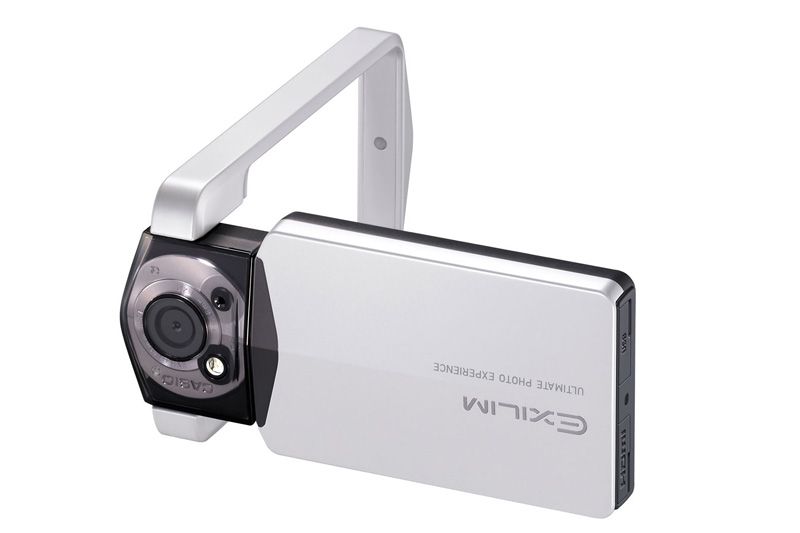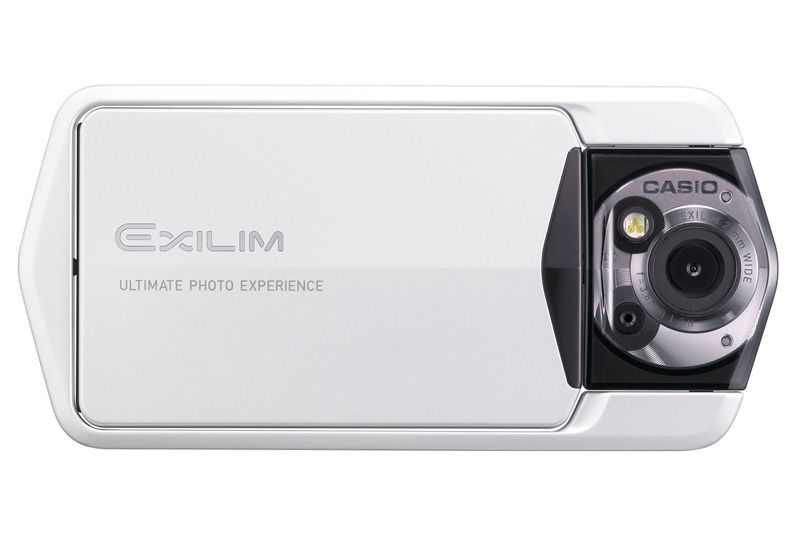At CES 2011 the Casio Exilim Tryx (or EX-TR100 as it’s more conventionally named in Europe) was the toast of the show’s camera releases. The Tryx TR100 is built around a frame that can swivel and rotate - bear with us here - that’s a great idea for setting up unusual angles, taking self-portraits or even using the frame for tripod-like support.
Our quick take
The Tryx is for cameras what a flick-knife is for knives: it tries to look all big and clever, but is ultimately pointless if you could buy a better, sharper one somewhere else for even less money. Swanky though it may appear, this is a one Tryx pony with little appeal bar its conceptual prowess.
Of course there will be a market for the Tryx EX-TR100: if you’re after a 21mm wide-angle lens in a self-supporting compact body that can capture HD movies then this is the only camera for you. But for the rest of us folk the Tryx’s flaws are all too many, the appeal all too little and the £250 RRP just too much.

Casio Exilim EX-TR100 (Tryx) - 2.0 / 5
| FOR | AGAINST |
|---|---|
|
|
A potentially great concept this may be, but one that’s fundamentally flawed by the rest of the camera’s design: the lens is always to the outer-most edge which means fingers will often get in the way; the shutter button is on the back (or front if you twist it around of course) of the camera which is awkward to press; there’s no flash (only an LED light); and the touchscreen control means that all options are tucked away in a semi-responsive menu system.
There may have been some respite from this if the lens wasn’t a fixed 21mm wide-angle. There is no optical zoom, it’s digital only, which means the prospect of taking flattering portraits or more standard shots (without cropping into the frame) is, frankly, not possible. 21mm is very wide-angle: as we mentioned in our hands-on preview, the likes of skaters propping the camera up at the end of a ramp to get a quirky wide shot may go nuts for the Tryx TR100, but for the wider public it’s so niche that there’s no existing category to fit it into.
As all the Tryx’s controls are operated using the touchscreen, even the digital zoom is adjusted using a small slider to the side of the screen. As such it’s not always easy to accurately reach nor is it very responsive which makes for difficult operation.
On the upside the 12.1-megapixel sensor doesn’t cram on too many pixels, so the images are crisp and sharp. This is a trait of other recent Exilim compacts that also produce good images. However, the small lens suffers from poor exposure akin to a mobile phone camera. Bright lights will flare and overexposure isn’t uncommon either. Plus, at such a wide-angle setting there’s a notable amount of barrel distortion towards the edges - not a problem for distinct or stylised pictures, but undesirable for more conventional shots.
As well as the standard set of Auto modes, the Tryx also offers a Slide Panorama for taking panoramic shots in real time. However the wide-angle lens causes a lot of distortion that the camera clearly has to battle with when attempting to stitch shots inside the camera. The result here is that overlapping edges will often produce a poorly made final panorama.
HDR Art is another mode that Casio is trying to push, but another all too unconventional option. A mix of cartoon-like HDR processing and enhanced colours, there’s rarely an occasion when shots don’t look like something out of a kid’s colouring book. We’re a little stumped as to the use of such shots, plus it’s not possible to preview how things are going to look in real time on the screen - only once the shot is taken and processed can you see the results.
In addition to stills the Casio Exilim Tryx EX-TR100 can also shoot 1080i HD movies. The quality is good, though this diminishes should you employ the digital zoom (this can be used during capture too, but the jump between crops is very jolty indeed). It’s in movie mode that the Tryx’s LED lamp comes in useful for subtle fill effects - though this does come at the expense of no flash unit for stills.
To recap
The Casio Exilim Tryx EX-TR100 has a quirky adjustable frame that can be used for unusual angles and tripod-like self-support. However, the 21mm wide-angle lens has no optical zoom, there’s no flash and the design makes it tricky to use. There’s not enough here for the money and this just won’t appeal to the masses


